#Subway Train Control Program
Explore tagged Tumblr posts
Text

Megaman Production Art Scan of the Day #712:
Subway Train Control Program Head Shot + Full Body Character Design Sheet [Control Program]
Notations include: - Back view - Sole of foot
Program-kun who?
Well, this dude is from Episode 2 of Season 1 of NT Warrior (Subway Panic!/Scramble!), so I guess it was too early to officially call this a stand alone Net Navi.
A group of these Navis...er, programs...were defeated by a bunch of viruses in the runaway train comp that Megaman fought Elecman in.


It was a bit faded at the bottom of the sheet and adjusting levels to make it a little visibly darker just led to way more residue cleanup than I wanted to do. Sorry it's a bit late today.
Vaguely reminds me of Dreamwave's Express Man, in Navi form, in some ways.
*EDIT* As pointed out on Twitter by @L858R and @Force3d2y, this program was actually in Takamisaki's manga originally. So the anime version was more likely a cameo/homage at that time. */EDIT*
Full Resolution Scan: https://imgbox.com/tlxOB8zh
#Megaman Production Art Scan of the Day#Rockman#Megaman#Mega Man#Rockman.EXE#Megaman Battle Network#Megaman NT Warrior#Subway Train Control Program#Control Program#Net Navis#Normal Navis#Miyabi Scans Stuff
12 notes
·
View notes
Text
MCU Timeline: Black Widow
1970s - Early 1980s - Melina Vostokoff is cycled through the Red Room (four times).
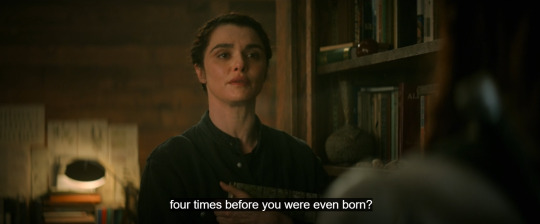
1980s - Alexei Shostakov serves as the Soviet superhero Red Guardian.
December 3, 1983 - Natalia Alianovna Romanova is born.

Note: In CA:TWS, Zola said Natasha was born in 1984, so it's not entirely clear which year is correct. Considering she looked older than 10 in September 1995, and the fact that CA:TWS was a mess in terms of dates, I'd go with 1983.
December 1983 - 1984 - Natasha is selected through a program to assess the genetic potential of infants and taken from her family.
1984 - 1990s or 2000s - Natasha's biological mother is looking for her.
1989 - Yelena Belova is born.

1992 - the last time Alexei Shostakov was on a mission as the Red Guardian.
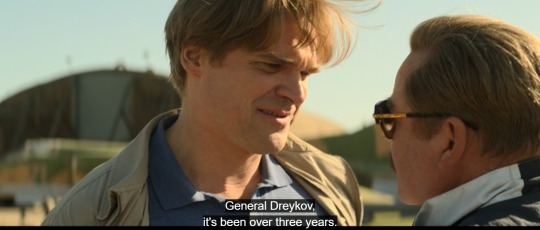
1992-1995:
Natasha, Yelena, Alexei and Melina play family in Ohio.
The "Parents" infiltrate the North Institute (a front for S.H.I.E.L.D./Hydra scientists working on mind control techniques as part of the Winter Soldier program).
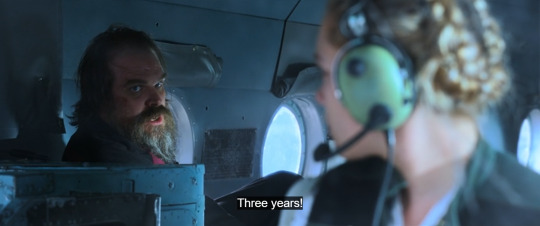
~September 1995:
Alexei steals data from S.H.I.E.L.D./Hydra and burns down the North Institute. They leave the States and fly to Cuba.
Girls are sent to be trained as spies and assassins.
Dreykov throws Alexei in prison for life.

1995 - Early 2000s:
Natasha undergoes training in the Red Room and becomes the Black Widow.
Natasha's biological mother is killed on Dreykov's orders.
1995-2016 - Melina perfects mind control for the Red Room using stolen data.
2000s:
Natasha takes part in KGB missions all over the world.
Yelena is used as a child assassin.
2008:
Natasha defects to S.H.I.E.L.D. after meeting Clint Barton.
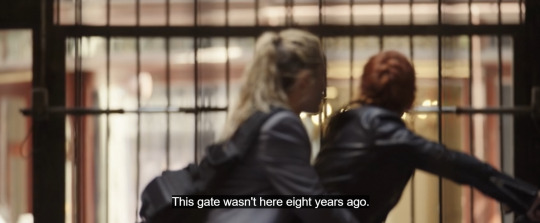
As the final step in this process, she blows up General Dreykov and his daughter Antonia in Budapest. For the next eight years, she believes he is dead and the Red Room is gone.
Next 10 days - Natasha and Clint hide from Hungarian special forces, including 2 days in a subway ventilation shaft.
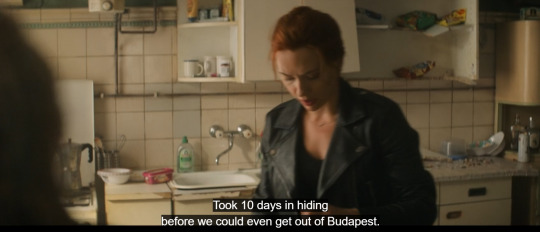
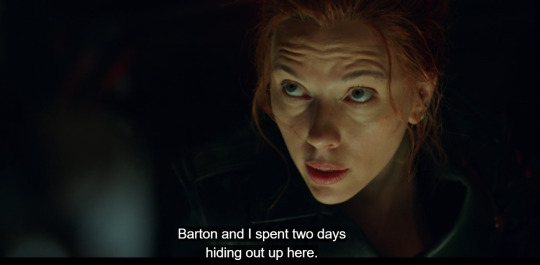
Antonia survives, and her father turns her into a weapon - an operative Taskmaster.
After Natasha's escape, Dreykov begins using chemical subjugation on his agents to prevent anyone else from getting out.
The main events take place in May 2016.
First days of May:
Yelena is freed from mind control while hunting former Black Widow Oksana in Morocco. Oksana, mortally wounded, asks her to free the others with vials of Red Dust. Yelena defects from the Red Room.
With Mason's help, she hides in a safe house in Budapest.
Through him, Yelena sends Red Dust to Natasha.
May 4:
Natasha aids the Rogue Avengers at Leipzig/Halle Airport, attacks T'Challa, and goes on the run from Ross, who places her on an international wanted list.
~Night - Secretary Ross has another heart attack and a second (presumably) triple bypass surgery.
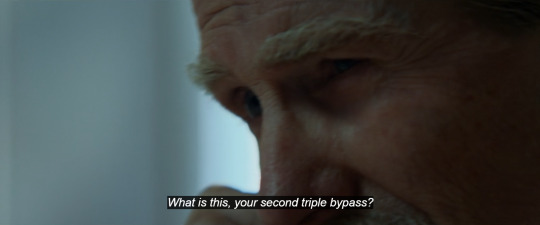
Note: it's probably Tony's fault.
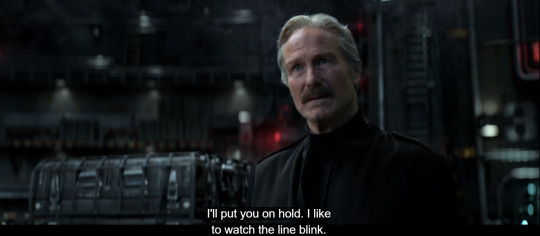
~May 5-7 - Natasha is in the US. She leaves her suit and tracker at the train station and heads back to Europe.
~May 8, 8:50 am (US)/2:50 pm (Norway) - Natasha tricks Ross on her way to Norway and gets rid of her phone.

Why May 8th: Here's the thing - we don't know when Ross's heart attack happened. But since he wasn't monitoring Tony after Raft, I'm guessing it was the same night of May 4th-5th or May 5th. It takes 3 days to start walking after artery bypass surgery. So we have to assume it was at least May 8th. More than a few days would also be weird since Natasha was on the run, not on the crawl.
~5 pm - Natasha buys groceries and arrives at a mobile home in the Norwegian wilderness, where she finds Mason, who has brought her fake IDs and mail from the safe house in Budapest.
~11 pm - the power goes out in the mobile home, and Natasha goes into town to get fuel for the generator, taking the vials with her in the trunk.
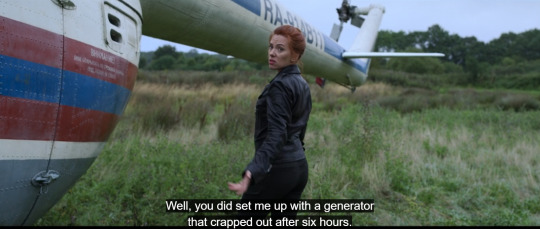
She is attacked by Taskmaster, who is looking for the vials. They fight. Taskmaster defeats Nat by throwing her into the river, but she manages to take the vials.
~May 11:
Natasha comes to Budapest.
Why 3 days later: 1) The train ride from Budapest to Norway takes about 2 days. 2) She split her lip during the fight with Taskmaster, which had already healed by the time she arrived in Budapest (takes at least 3 days). 3) The bruises on her body turned purple (takes 2-5 days after they appeared).
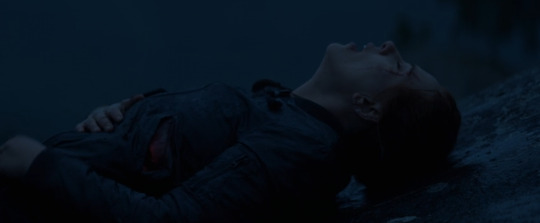

She arrives at the safe house and meets Yelena. They then fight, but end up in a truce.
Natasha learns that Dreykov is still alive and the Red Room still exists.
Natasha and Yelena are attacked by mind-controlled Black Widows.
Before they could use Red Dust on one of the wounded Widows, she was killed remotely by Dreykov.
Natasha and Yelena are pursued by Taskmaster until they reach the same ventilation shaft that Natasha and Barton hid in 8 years ago.
Evening - Nat and Yelena decide to destroy the Red Room and kill Dreykov. For real this time.
Natasha orders a jet through Mason.
~May 13:
Yelena and Natasha arrive in Russia.
Mason gets them an old Russian helicopter.
Why May 13: The drive from Hungary to Russia takes ~20 hours. They left at night and could only arrive the following evening. They met Mason in the daytime, that is, the next day.
~May 14:
Natasha and Yelena arrange Alexey's escape from prison in Russia.

F*ck up time: here we go again - snow in Russia in mid-May. I could say "okay" if we were talking about Oymyakon, but it's very far from St. Petersburg, and from the distance they could fly with this helicopter. On the way back they only had fuel for ~100 km of flight. This means that this prison had to be very close to the city. But it definitely wasn't, if our eyes are to be believed. There are no such frozen mountain places around St. Petersburg.
They head to St. Petersburg to find Melina, but they run out of fuel before they reach their destination, so they walk the rest of the way.
Evening - family reunion. They come to Melina's house outside the city.
Melina alerts the Red Room.
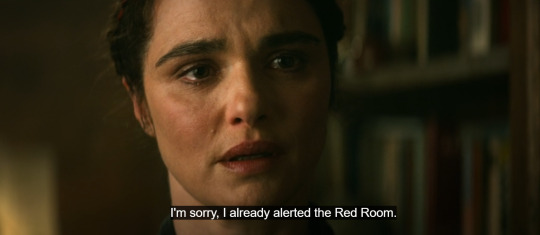
Alexei put on his Red Guardian suit (Melina had kept it all these years).
The fake family drinks vodka and argues. Melina tells Natasha the truth about her parents.
10 pm - Melina tells Nat she alerted the Red Room. They create a plan and Melina tells Nat how to defeat Dreykov. Natasha and Melina "switch bodies."
~10:12 pm - Dreykov's agents arrive and take everyone to the Red Room.
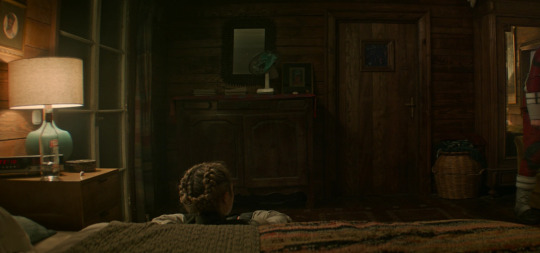
~May 15:
1:35 am - Natasha, disguised as Melina, comes to Dreykov's office and activates her tracker, allowing Ross to find her.
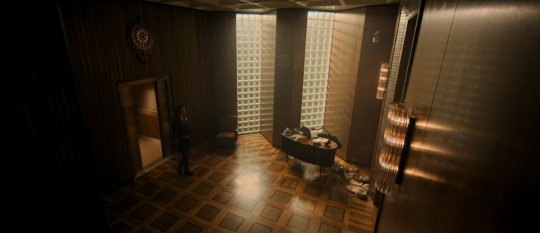
The Red Room surgeons prepare Yelena for a craniotomy so that Melina can dissect her brain while Yelena is still alive.
Alexei and the real Melina, in the guise of Natasha, wake up in the Red Room cells on level zero.
Dreykov exposes Natasha.
Melina, Alexei and Yelena escape.

Dreykov reveals that Taskmaster is his daughter, who survived the explosion. He sends her away and is left alone with Natasha.
Alexei fights Taskmaster. He and Melina manage to put her in a cell.
Dreykov prevents the activation of the landing protocol and shows Natasha the console from which he controls all the Black Widows.
Natasha breaks the pheromone lock preventing her from killing Dreykov and attacks him.
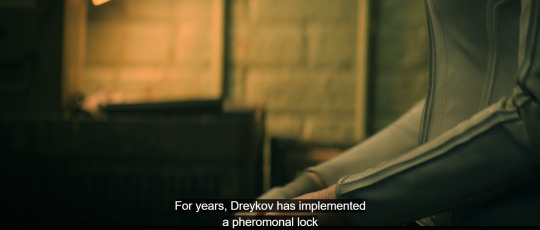
Melina destroys the Red Room's engine and the structure goes on an (un)controlled crash.
Black Widows attack Natasha.
Yelena blows up the vials, exposing the Black Widows to the Red Dust.
Natasha downloads the Black Widow database.
She frees Antonia from the cell.
Yelena kills Dreykov, Natasha fights Taskmaster.
After sunrise, somewhere in eastern Russia, few time zones away from St. Petersburg - Natasha, Yelena, and Antonia land. Natasha exposes the latter to the Red Dust.
Family gathering. Yelena gives Natasha her vest with many pockets. Natasha gives her a mission to free other Black Widows around the world.
Yelena, Melina, Alexei, Antonia and the freed Widows leave. Natasha surrenders to Ross, who has arrived. She then escapes from his car.
Late May (3 days before the next date) - Mason travels through 6 different time zones to get a quinjet for Natasha.
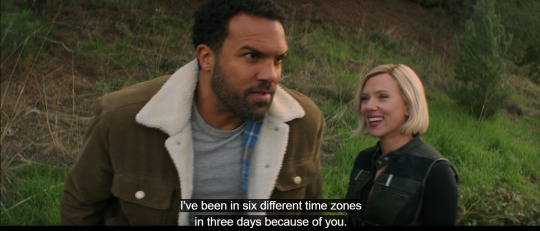
2 weeks after the termination of the Red Room, last days of May/first days of June 2016 - Natasha, dyed white, finally receives the Avengers jet from Mason and flies to help Rogers organize the Rogues' escape from the Raft.

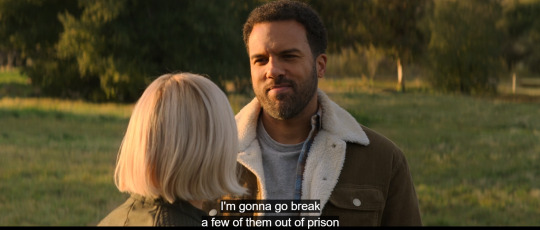
I can't imagine how he didn't melt in those layers of clothing in the summer.
2016 - May 2018 or late 2023 - early 2024 - Yelena adopts a dog, Fanny.
Late 2023 – Early 2024 – Natasha Romanoff receives a tombstone in Ohio.
Late April/Early May 2024:
Yelena visits the gravesite on her holiday.

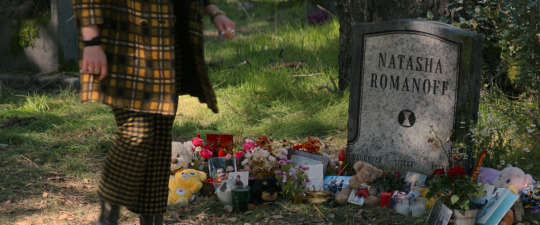
Valentina Allegra de Fontaine comes too and gives Yelena her next target - Clint Barton.
MCU Timelines: Phases One and Two
#marvel#mcu#black widow#natasha romanoff#mcu timeline#yelena belova#alexei shostakov#red guardian#melina vostokoff#taskmaster#thaddeus ross
56 notes
·
View notes
Text
This is just a quick one shot I wrote about Clementine in which she's the first companion to make it to the outside <3
Of all the outsiders, Clementine was the first one to the outside.
Being in the upper levels of Midtown gave her the advantage, as she looked around in awe at the sight of the dome opening. Even the Sentinels, as heavily programmed with their objectives as they were, couldn’t not stop and look up at the light pouring into the city.
With a baited, synthetic breath, Clementine took off running towards the subway station. There wasn’t only one subway, after all, and she had made a copy of the key before she gave it to that orange feline. She had started calling it Stray in her mind, having read an old book on domestic animals. That’s what the humans called animals without a home.
Guess you could say Clementine was a bit of a stray herself.
She didn’t know if the Sentinels were following her, and really, she didn’t care. The only thing on her mind right now was… well, seeing the outside. Seeing everything she and her friends had worked towards and believed in. The old metal of the subway cart bounced under her feet as she practically threw herself into it. Was it supposed to do that?
In any case, she haphazardly stuck the key into the controls, pushing down the lever to get the train moving.
Oh – Oh, god, it was loud– Screeching of the wheels on the tracks and well-worn-out machinery coming back to life after who knows how long. The sudden jerk as the train started caused her to lose her balance momentarily. The only thing she could do now was… wait. She didn’t know what was in the control room or what to expect when she finally stepped foot in the outside. It seemed so bright and full of life from the pictures she had, and she could only hope it was that way now.
… The train stopped. Clementine jolted, pulled from her thoughts by the sound of the doors opening. What lay in front of her was… something she didn’t expect.
The control room – well, the subway part of it – looked a lot cleaner than the lower levels. Were the Companions up here just neat freaks?
Stepping out of the subway cart, she looked around at the place. White walls, bare floors, and not a single thing out of place. The lights were either blue or dull white, a stark contrast to the neon signs that lit up Midtown. She felt out of place here, with her somewhat tattered clothes and multicolored chassis.
Venturing further into the control room, she found that it was just that. A room. No winding streets and alleyways like Midtown or the Slums, but something more akin to a very large apartment. Or maybe a mall, with its polished floors and dull lighting. It did have stairs, exit signs, random benches scattered around, and dotted with plants.
Her eyes landed on another Companion, standing nearby and sweeping nonexistent dust.
They looked… oddly mechanical. Stiff and metal. Not that Clementine wasn’t, but she and the others had a rather wide range of movement. She could feel and think for herself, despite the colorful wires that made up her internal systems. The Companion in front of her looked as if they were stuck doing that one task. No thoughts in their head other than what they were programmed for.
Clementine shivered, feeling claustrophobic at the thought. It sounded like a nightmare, stuck doing one thing until told otherwise. It almost seemed like a prison. But of course, they didn’t know that. … They were also naked. Clothes weren’t a requirement, of course, the Companions weren’t made with any private parts that needed to be covered up, but many of them preferred it. It was a way to express themselves. The fact that no one in front of her had any clothes only drove home the idea that they couldn’t think for themselves. They didn’t even acknowledge her presence when she walked past.
It took her a minute for Clementine to find her way around, despite the few signs scattered around. The silence was just so creepy, and nothing like the constant chatter going on down below. When met with a short corner, she turned right and climbed the one step that led to many rows of computers and a few breaker boxes in the back. Something bright caught her eye, and as she turned her head, her synthetic breath caught in her chest – the fans near her main battery faltering to create the effect of a skipped heartbeat.
A large glass window, overlooking the entire world she called her home that was now basked in sunlight. Her hands pressed to the glass as she looked down at the entirety of Midtown and the Slums from her elevated position. A feeling rose in her chest, almost feeling like her wires were twisting around each other in excitement. A feeling that only encouraged her to push off of the glass, once again taking off into a sprint. She thought she caught a glimpse of a red door… There! A pair of double doors, open wide with the outside lying just beyond them.
Clementine had never run faster in her life, her fans whirring loudly in her chest – the only thing Companions could get to a rapidly beating heart. Feeling the dirt under her feet as she passed through the doors and clambered up the stairs towards the sunlight.
In her excitement, she failed to notice the thick roots just at the top of the stairs and stumbled, falling flat onto her face and into the grass.
She barely had time to process the pain of the fall, her sensors taking in the feeling of grass around her. She was lying in the grass. For a second, she just laid there. The sun was warm on her chassis, and her audio processors picked up the sound of birds and the wind. Her eyes closed, basking in the success of everything she had worked for.
8 notes
·
View notes
Text


Kill Train #1 by Olivia Cuartero-Briggs, Martina Niosi and Simone D'Angelo. Cover by Skylar Patridge. Variant cover by Alison Sampson. Out in January 2025.
"To control the population explosion that nearly crippled the city, New York has instituted Kill Train, a randomized, extermination program where designated subway trains are picked at random, and all the passengers are slaughtered by the end of the line. In this not-so-distant future, we meet Vanessa, a struggling single mom in the midst of a nervous breakdown, who discovers that she, herself, is on a Kill Train. Now, for once in her life and with everything to prove, Vanessa decides she's not going down without a fight."
#kill train#mad cave studios#olivia cuartero-briggs#martina niosi#simone d'angelo#skylar patridge#alison sampson#variant cover#horror#comics
11 notes
·
View notes
Text
Eskewcity's Top Ten Games of 2023
Hello!!! I've decided to compile a list of the best games I played this past year. As such, this list is not limited to only 2023 releases (in fact a majority of the games I played are several years old atp). Additionally, I only considered games that I had completed by year's end. This means that fantastic games such as Signalis and The Talos Principle 2 will not be included, though I still highly recommend them.
Finally, I will put my ranking under a read more for the sake of not clogging anyways dash. Hope you all had a good 2023 and maybe can find something that interests you mwah <3
10. Subway Midnight by Bubby Darkstar
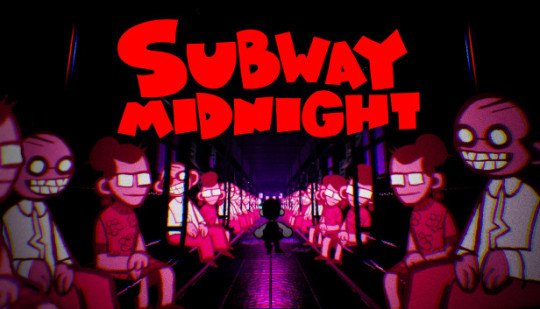
Board the train! Run away from a weirdo! Solve some puzzles! Make friends with some ghosts! Try not to become a ghost yourself!
While I am not someone usually willing to gloss over a somewhat lackluster story for the sake of gorgeous visuals, I will give Subway Midnight an exception. Even with a game that largely takes place in a subway car, it was exceptional when it came to its visual design. It has a blend of a cartoonish style for the characters mixed with extremely realistic environments. The gameplay itself was also quite fun, if not tedious in multiple runs and I really enjoyed the variety of characters that players encounter.
9. Broken Reality by Dynamic Media Triad

A humorous adventure set in a 3D parody of the internet. Diverse puzzles, beautiful worlds, friends, experiences, upgrades and more, await those who 'log on'!
Depending on yourself, Broken Reality might either be a headache inducing cacophony of colors or a fun exploration game about the internet and the commercialization of products and each other. For myself, I choose to look at it from the latter perspective. I found the game to put quite humorous and I really enjoyed all the different worlds to explore. Much like Subway Midnight, I would not recommend it much on its story but I think the design and concept certainly carries where that lacks.
8. Hylics by Mason Lindroth

Hylics is a recreational program with light JRPG elements.
At its core, Hylics is a game with a pretty simple concept. Fight your way through the world with the end goal of defeating the big bad, Gibby, King of Moon. However past that, get ready for a confusing and abstract adventure. This accounts for several reasons. For one, the dialogue of Hylics consists of randomly generated sentences that feel almost coherent while maintaining a healthy amount of head scratching. The game was also created through claymation leading to characters and environments whose shapes twists and turn in perplexing patterns. While this may seem to take away from the experience, I found this not to be the case at all. In fact, I would say it enhanced my time playing greatly. I could not stop thinking about Hylics after I played it simply because its weird and purposely lacks focus which makes it all the more memorable.
7. Babbdi by Sirius & Léonard Lemaitre

BABBDI is a short, first person exploration experience with light narrative and platforming elements. Visit the town of BABBDI, a forsaken district in the outer ring of the megalopolis. Meet its inhabitants and discover how to escape.
In Babbdi, your goal is to leave Babbdi. You must search through the city to find a train ticket that can guarantee your escape. However, the ironic part of playing this game was that I did not rush to leave. While being a free-to-play game, it had an incredibly sizable area to explore. The game actively encourages the player to search every inch of city to find its secrets while also reminding the player that their goal is to eventually leave all of this behind. If you have an hour or so to spare and love games focused more on exploration than action, this is definitely one to check out!
6. Who's Lila? by Garage Heathen

A reverse-detective adventure, where you control your character's face
In Who's Lila, you play as a young man named Will who cannot properly control the expressions on his face. As the player, your job is to ensure that he reacts properly to the world around him. The game even starts with a tutorial on how to respond accordingly to a variety of situations. While a seemingly simple concept, this game is not as it may appear. In fact, and without giving much away, Who's Lila requires multiple playthroughs to order to begin to piece together what is truly going on.
5. Hypnospace Outlaw by Tendershoot
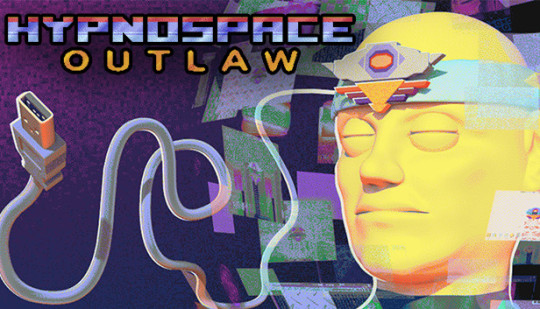
Greetings Enforcer, and thank you for enlisting in the Hypnospace Patrol Department! As the world falls into its slumber, Hypnospace becomes a bustling global village. These virtual streets aren't going to police themselves!
Taking place in 1999, Hypnospace Outlaw tasks you as a moderator for a new form of technology which allows users to surf the internet in their sleep. As the player, you're tasked with seeking out policy violations and handing out warnings and even banning users, if necessary. There is so much about this game I can say but I find going in blind is the best. I definitely found some frustrations which some of the puzzles and how obtuse their solutions were but its undeniably one of the most unique games I have ever played.
4. Return of the Obra Dinn by Lucas Pope

Return of the Obra Dinn is a first-person mystery adventure based on exploration and logical deduction.
In Return of the Obra Dinn, is a mystery game where you not only have to determine the fates of one person, but an entire ship's crew. Additionally, you have to determine the names of each individual based on existing records. By going in the past to witness the last moments of each individual, players can be able to slowly work out the mystery of the Obra Dinn. As someone who plays many puzzle games, I found this to be one of the most satisfying I've ever played. I also thought the game just looked gorgeous and was extremely fitting for the vibe it was going with.
3. Papers Please by Lucas Pope
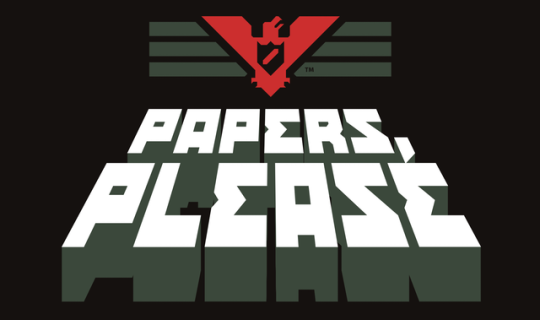
Congratulations. The October labor lottery is complete. Your name was pulled. For immediate placement, report to the Ministry of Admission at Grestin Border Checkpoint. An apartment will be provided for you and your family in East Grestin. Expect a Class-8 dwelling.
As a border patrol officer, your job is determine the legitimacy of the documents that are brought to you by people wishing to enter the country of Arstotzka. This requires things such checking if their paperwork has expired, if they match their passport photo and if they have the necessary seals for entry. However, what if someone comes to the border fearing for their safety if they are denied, without the correct paperwork? Will you let them in, risking punishment for yourself or deny them, ensuring that you will able to provide for your family at home? Papers Please is a game that will continuously make you question your own ethics under a authoritarian regime. I found this game to be incredibly emotional and made me replay several days simply because I decided against my initial judgments. Certainly one of the most impactful games I played this year.
2. Presentable Liberty by Wertpol

You have been imprisoned without being told why. All you can hear day in day out is the faint ticking of a clock in your cell. That is, until the first of 5 fateful days begins.
Sometimes there are short indie games in the world that fundamentally change you and this is one of them for me. With that in mind, there is not much I want to say about Presentable Liberty since I find its best experienced blind. The short of it is you play as a prisoner as they receive letters from those on the outside. The gameplay is minimal since the player is stuck in their cell for the majority of the game but promise you when I say it does not much that action when its biggest strength comes from its writing. While this game had its short lived success on Youtube, I implore everyone out there to play it and see why I choose to rank it this high on the list.
1. Cry of Fear by Team Psykskallar

Cry of Fear is a psychological single-player and co-op horror game set in a deserted town filled with horrific creatures and nightmarish delusions. You play as a young man desperately searching for answers in the cold Scandinavian night, finding his way through the city as he slowly descends into madness.
Honestly, it's insane it took me so long to play this game especially when loving a piece of media that's a psychological horror featuring a depressed character wandering a city is kind of what I'm known for. However, I finally got around to it and I'm so glad I did. While not the most technically savvy game out there, it is incredible what Team Psykskallar managed to pull off while offering players the opportunity to experience the entire thing for free. Several times throughout playing Cry of Fear I couldn't stop thinking how much better it was than many of the games I've paid for. Like I said, its definitely not the most polished horror game out for sure but damn was I charmed. Even after I completed this game, I immediately had to restart so I could play with director's commentary as I was just that damn interested in learning about as much of this game's development as I could. And its because of how invested I got in playing this game but also its background, that I choose to make it my number 1 pick this year.
(fuck that train level though)
#GOOD GOD ITS DONE FINALLY YAYY#i know there's so many typos i will have to fix and i cringe a little at the phrasing of a few things but that's tomorrow me's problem#also I am aware I am insane you did not need to write all of that nor did I want to#<33#game recommendations
40 notes
·
View notes
Text
Knightfall part three
I have years of experience reading American superhero comics and a reading guide, and I am still missing things I want to read and flipping through stuff I don’t care about. Comics!
Edit: I decided to pause Knightfall to go back and read Robin, and Robin #0 takes place AFTER KNIGHTFALL, which I did not realize until the last page. *sigh*
I think I’ve figured out what bothers me about JPV: A story where a guy’s been programmed to act on triggers without thinking, who doesn’t have control of himself, can be an interesting horror story. But JPV’s supposed to be cool. I can’t find him cool or interesting or even take him seriously as a character if he has no agency. Technically, he can make a choice: he can put down the costume and the weapons and get help. But the narrative never allows this to be a choice, he’s just supposed to make better choices, even though it seems he can’t. He didn’t kill Bane, but it read less like him choosing not to kill and more like … it wouldn’t be fun since Bane wanted him to? IDK.
Why does JPV keep calling Harold a dwarf? And how is he managing to sound so bigoted in a time before people stopped even using that word?

Action figure JPV Batman gets a jet-powered Bat…vehicle subway thing that I’m guessing is another toy, but that I will accept because Batman’s private super-subway is funny as hell. …oh wait, it’s not private, it’s running on the subway lines. And JPV has not bothered to check where the subways are running out. Well, he’s not going to crash or we wouldn’t have hundreds and hundreds of pages left.
JPV has bricked off Tim’s cool secret tunnel. >:( I guess he didn’t appreciate Tim saving all those civilians last issue and telling him he’s Batman. You just can’t make some people happy.

Oh hey, I remember this cover. Slight alteration in JPV’s target here.
The comic: Actually, this WAS dumb and he WILL crash.
JPV blames Harold for this (though he’s switched from calling him “the dwarf” to “the hunchback” … he’s still an ass). JPV, no one made you go zooming around at hundreds of miles per hour without checking the trains first. Dumbass.
JPV averts the crash with the rocket boosters that set everything on fire. And loves it!

The state is letting Tim drive. The state is not aware of Tim’s adrenaline-seeking behavior.

I love that Tim breaks into the batcave. Very him. Is that woman on the shooting range a bystander JPV’s supposed to avoid or just some lady that pissed him off?




Tim does a good job of fighting off JPV, but gets choked anyway.
And here I am putting aside Knightfall to continue in Robin #1. ...but tumblr has stopped letting me add images for some reason. So I guess I'm ending this here.
3 notes
·
View notes
Text
This was in my memories for today from my sister Becca Mahoney. I have re-trained myself to be this type of mother, friend, sister & cousin! My life is so much more peaceful and relaxing! It was not easy, however worthwhile things rarely are.
It is certainly is
*A WORTHY READ*
🌳🫶🏼🌳
My mom did not sleep. She felt exhausted. She was irritable, grumpy, and bitter. She was always sick until one day, suddenly, she changed.
One day my dad said to her:
- I've been looking for a job for three months and I haven't found anything, I'm going to have a few beers with friends.
My mom replied:
- It's okay.
My brother said to her:
- Mom, I'm doing poorly in all subjects at the University.
My mom replied:
- Okay, you will recover, and if you don't, well, you repeat the semester, but you pay the tuition.
My sister said to her:
- Mom, I smashed the car.
My mom replied:
- Okay daughter, take it to the car shop & find how to pay and while they fix it, get around by bus or subway.
Her daughter-in-law said to her:
- Mother-in-law, I came to spend a few months with you.
My mom replied:
- Okay, settle in the living room couch and look for some blankets in the closet.
All of us gathered worried to see these reactions coming from Mom.
We suspected that she had gone to the doctor and that she was prescribed some pills called "I don't give a damn”... Perhaps she was overdosing on these!
We then proposed to do an "intervention" with my mother to remove her from any possible addiction she had towards some anti-tantrum medication.
But then - she gathered us around her and my mom explained:
"It took me a long time to realize that each person is responsible for their life. It took me years to discover that my anguish, anxiety, my depression, my courage, my insomnia & my stress, does not solve your problems but aggravates mine.
I am not responsible for the actions of anyone & it’s not my job to provide happiness but I am responsible for the reactions I express to that.
Therefore, I came to the conclusion that my duty to myself is to remain calm and let each one of you solve what corresponds to you.
I have taken courses in yoga, meditation, miracles, human development, mental hygiene, vibration and neurolinguistic programming and in all of them, I found a common denominator in them all...
I can only control myself, you have all the necessary resources to solve your own problems despite how hard they may be. My job is to pray for you, love on you, encourage you but it’s up to YOU to solve them & find your happiness.
I can only give you my advice if you ask me & it depends on you to follow it or not. There are consequences, good or bad, to your decisions and YOU have to live them.
So from now on, I cease to be the receptacle of your responsibilities, the sack of your guilt, the laundress of your remorse, the advocate of your faults, the wall of your lamentations, the depositary of your duties, who should solve your problems or spare a tire every time to fulfill your responsibilities.
From now on, I declare all independent and self-sufficient adults.
Everyone at my mom's house was speechless.
From that day on, the family began to function better because everyone in the house knew exactly what it is that they needed to do.
For some of us this is hard because we've grown up being the caregivers feeling responsible for others. As moms & wives we are fixers off all things. We never want our loved ones to go through difficult things or to struggle. We want everyone to be happy.
But, the sooner we take that responsibility off of our shoulders & on to each loved one, the better we are preparing them to be responsible.
We are not here on earth to be everything to everyone. Stop putting that pressure on yourself.
*I personally did not write this. I came upon it, found it to be powerful and in this crazy time thought it would be a good "read" to share* ❤️
3 notes
·
View notes
Text
Caylos: Empowering Franchisors and Franchisees to Succeed Together
In the world of modern business, franchising has emerged as a powerful model for expansion, scalability, and success. It allows entrepreneurs to grow their brand beyond geographical boundaries while giving others the opportunity to own and manage their own business under an established brand name. At Caylos, we specialize in supporting both the franchisor and the franchisee—because we believe that the strength of a franchise lies in a balanced and well-supported partnership.
Whether you’re an ambitious franchisor looking to scale your brand, or a potential franchisee eager to own a thriving business, Caylos is your trusted partner in the franchising journey.
What is Franchising?
Franchising is a business model where a company (the franchisor) grants the rights to use its brand, products, systems, and processes to an individual or business (the franchisee) in exchange for fees and ongoing royalties. This model allows the franchisor to expand its reach, and the franchisee to operate a proven business with the support and reputation of a larger organization.
It’s a win-win—but only when executed correctly. That’s where Caylos steps in.
Who is a Franchisor?
A franchisor is the original or existing business that offers the franchise opportunity. They develop the business model, build the brand, create operational systems, and provide support and training to franchisees. Some of the world’s most successful companies—like McDonald's, Subway, and Domino’s—grew exponentially through franchising.
Responsibilities of a Franchisor:
Building a strong, replicable business model
Offering brand consistency across all locations
Supporting franchisees through training and marketing
Protecting intellectual property and brand integrity
Ensuring quality control across the franchise network
At Caylos, we assist franchisors in crafting franchise models that are scalable, sustainable, and profitable.
Who is a Franchisee?
A franchisee is the individual or company that purchases the rights to operate a business using the franchisor’s name and system. They benefit from the franchisor’s brand reputation, support infrastructure, and proven success formula.
Responsibilities of a Franchisee:
Operating the business according to franchisor guidelines
Hiring and training staff
Managing daily operations and customer service
Paying initial franchise fees and ongoing royalties
Participating in marketing and promotional efforts
For new entrepreneurs, becoming a franchisee offers a lower-risk entry into business ownership. Caylos provides resources, coaching, and support to help franchisees succeed from day one.
Caylos: Your Bridge Between Franchisor and Franchisee Success
At Caylos, we understand that the key to a successful franchise model lies in the mutual growth of both the franchisor and the franchisee. Our services are designed to align both parties’ goals and ensure a smooth, productive relationship.
Services for Franchisors: Build, Scale, and Support
Whether you're a startup with a unique concept or an established business looking to expand, Caylos helps you structure and grow your franchise model.
🧱 Franchise Model Development
We help you build a detailed franchise blueprint, including:
Franchise disclosure documents (FDD)
Operations manuals
Legal agreements
Territory mapping
Royalty structures
🎯 Strategic Expansion Planning
We identify target markets, growth strategies, and scalable infrastructure to help you expand efficiently and sustainably.
📢 Marketing & Brand Positioning
From logo to launch, our team ensures your brand identity is consistent, appealing, and market-ready for franchise expansion.
🧑🏫 Franchisee Training & Onboarding
We help develop comprehensive training programs to prepare franchisees for operational success.
Services for Franchisees: Launch, Learn, and Grow
At Caylos, we guide aspiring entrepreneurs through the process of selecting, starting, and succeeding with a franchise.
🔍 Franchise Selection Guidance
Not every franchise is the right fit. We help you identify franchises that align with your goals, values, and budget.
💼 Business Setup & Planning
From financing to location scouting and business plan development, we assist in setting up your franchise the right way.
📚 Training & Mentorship
Our experts provide ongoing training and mentorship in operations, management, and marketing.
💬 Ongoing Support
We remain a partner in your journey, offering post-launch support, operational check-ins, and problem-solving assistance.
Why Choose Caylos?
Caylos is more than a consultancy—we’re a community built on trust, transparency, and performance. Here’s why we’re preferred by both franchisors and franchisees:
✔ Proven Expertise
Years of experience in franchising across multiple industries—retail, F&B, education, fitness, and more.
✔ Tailored Strategies
No one-size-fits-all approach. We customize our services to your unique business goals.
✔ Legal & Compliance Support
Navigate franchise laws, registration, and compliance with ease.
✔ End-to-End Solutions
We provide full-service franchising—from conception to expansion and beyond.
✔ Technology Integration
We help you adopt technology tools for better operations, communication, and performance tracking.
Common Challenges in Franchising—And How Caylos Helps
🧩 Lack of Standardization
Inconsistent operations between franchise units can hurt brand reputation. Caylos helps create SOPs, training modules, and compliance tools for brand uniformity.
🧾 Legal Complexities
Franchising laws vary by region and are often complex. We provide legal guidance, documentation, and ongoing compliance assistance.
💸 Financial Mismanagement
Whether it's royalty structuring or investment planning, we help both franchisors and franchisees maintain sound financial practices.
📉 Poor Communication
Breakdowns in communication can lead to disputes and inefficiencies. Our franchise management tools promote collaboration and real-time feedback between franchisor and franchisee.
Franchise Success Stories with Caylos
"As a new franchisor, I had no idea where to start. Caylos helped me structure the entire franchise model. Today, I have over 20 locations across India." Ravi S., F&B Brand Owner
"Caylos made my dream of business ownership come true. I didn’t know much about running a franchise, but their support system has helped me become a successful franchisee." Neha R., Franchisee – Retail Sector
Key Considerations Before You Franchise
Whether you’re afranchisor or franchisee, consider these important factors before stepping into a franchise relationship:
Market demand and competition
Initial investment and ROI timeline
Training and support availability
Location and demographics
Scalability and long-term vision
At Caylos, we walk you through every consideration so that your decision is well-informed and future-proof.
The Future of Franchising with Caylos
Franchising continues to evolve with the integration of technology, new industries entering the space, and consumer behavior shifting post-pandemic. At Caylos, we stay ahead of trends to offer our clients innovative and adaptable franchise solutions.
Trends We Embrace:
Cloud-based franchise management platforms
Eco-friendly and sustainable franchising practices
Micro-franchising for small markets
Digital marketing and customer engagement strategies
Data-driven decision-making tools for both franchisors and franchisees
Conclusion: Partner with Caylos for Franchise Excellence
Whether you're looking to expand your business as a franchisor or begin your entrepreneurial journey as a franchisee, Caylos is your trusted partner in success. With a perfect blend of experience, strategy, and support, we help you navigate the franchising world with confidence.

0 notes
Text
Exploring the Benefits of Physical Therapy in New York's Urban Landscape
New York is a city that never stops moving—and neither do its people. Amid the rush of subways, the endless staircases, and the long hours spent at desks or on foot, physical discomfort and injury can creep into even the healthiest of bodies. That’s where physical therapy in New York steps in as a crucial health resource, offering targeted care that helps people maintain their well-being in a city that demands constant motion.
Urban Living and the Body
The physical demands of city life are often underestimated. Commuting involves long walks and crowded trains. Many jobs require sitting for extended hours, leading to posture-related issues. Recreational activities, though beneficial, often result in overuse injuries when not approached with proper technique.
Physical therapy provides a bridge between injury and full recovery, and it also serves a preventive role. New Yorkers are increasingly turning to therapy not just to recover, but to stay ahead of potential problems.
A Personalized Approach to Wellness
One reason physical therapy in New York is so effective is the highly individualized approach taken by professionals. Initial assessments take into account lifestyle, work environment, activity level, and medical history. Based on these, therapists create customized treatment plans that address the root of the issue, not just the symptoms.
These plans may include therapeutic exercises, posture correction, manual therapy techniques, and modalities such as ultrasound, electrical stimulation, or cupping therapy. Some therapists also integrate mindfulness and breathing techniques, which support not only physical but emotional well-being.
Adapting to the Pace of the City
Time is a precious commodity in New York, and physical therapy practices understand that. Flexible scheduling, early morning and evening appointments, and remote therapy sessions help ensure that care is convenient. Many therapists also offer workplace evaluations and ergonomic consultations, helping clients make their daily routines more body-friendly.
For those who can’t travel, home visits and telehealth appointments offer a practical solution. This accessibility supports recovery while respecting the intense schedules many New Yorkers manage.
Bridging the Gap Between Medicine and Movement
Physical therapy in New York often works in tandem with other medical professionals. This collaborative approach ensures continuity of care. For example, after orthopedic surgery, therapists coordinate with surgeons to monitor progress and adjust the recovery plan. For chronic illnesses, they may work alongside neurologists or pain specialists to manage symptoms and enhance mobility.
Some clinics even offer integrated services like massage therapy, acupuncture, or personal training. These additions help build a comprehensive, holistic healing environment, which many patients find deeply beneficial.
The Psychological Edge
Beyond physical improvements, therapy offers a sense of control and hope. Living with pain or restricted movement can be mentally exhausting, especially in a high-energy environment. Engaging in therapy provides a structured path forward and contributes to mental resilience.
Therapists often act as motivators and educators, helping patients stay committed to their progress. Seeing measurable results—whether that’s increased range of motion, reduced pain, or better balance—can uplift both body and spirit.
Evolving with Technology
Innovation is another hallmark of physical therapy in New York. Many clinics use digital tools to track progress, provide virtual demonstrations, or monitor posture in real time. Wearable devices and mobile apps are commonly used to ensure patients stay engaged with their programs even when they're not in the clinic.
This tech-forward approach is especially valuable in a city that embraces fast and efficient solutions.
Conclusion
Physical therapy in New York is far more than a response to injury—it's a dynamic, empowering path to resilience and vitality. Whether you’re recovering from surgery, managing a chronic condition, or simply trying to stay healthy in a demanding city, therapy offers the guidance, tools, and support needed to thrive. With its personalized care, innovative techniques, and commitment to holistic well-being, physical therapy has become a cornerstone of modern health in the heart of New York.
1 note
·
View note
Text
Why a Folding Electric Bike is Perfect for City Life
Urban living comes with its own set of challenges, particularly when it comes to commuting. With traffic congestion, limited parking spaces, and concerns about carbon emissions, city dwellers are constantly looking for smarter transportation options. A folding electric bike (e-bike) is an innovative solution that combines the convenience of a traditional bicycle with the power of electric assistance. It offers multiple advantages that make it an ideal choice for navigating busy city streets.
Portability and Space-Saving Design
One of the biggest advantages of a folding electric bike is its compact design. Unlike regular bicycles, which require dedicated storage space, a folding e-bike can be easily collapsed and carried indoors. This feature is especially beneficial for apartment dwellers who may not have access to a garage or bike rack. Whether at home, in the office, or on public transport, a folding e-bike can be stored in tight spaces without causing inconvenience.
Ideal for Multimodal Transportation
City commuting often involves a combination of different transportation methods, such as buses, trains, or even car-sharing services. A folding electric bike seamlessly integrates into this system, allowing riders to cycle part of the way and then fold the bike to board a bus or subway. This flexibility helps reduce commute time and provides a convenient last-mile solution, ensuring riders reach their destinations efficiently.
Cost-Effective Commuting
Compared to owning a car or using ride-hailing services daily, a folding electric bike is a more affordable transportation option. It eliminates the need for fuel, insurance, and parking fees, making it an economical long-term investment. Additionally, since many cities now offer incentives for eco-friendly transportation, some government programs even provide subsidies for purchasing electric bikes, further reducing costs.
Eco-Friendly and Sustainable
Environmental concerns are a major issue in urban areas, with traffic pollution contributing significantly to poor air quality. Folding electric bikes help reduce an individual’s carbon footprint by offering a green alternative to gas-powered vehicles. By opting for an e-bike, city dwellers can contribute to a cleaner and healthier environment while enjoying a sustainable mode of transportation.
Avoiding Traffic Jams
Traffic congestion is one of the biggest frustrations of city life. Sitting in long queues during rush hours not only wastes time but also increases stress levels. A folding electric bike allows riders to bypass traffic, use bike lanes, and take shortcuts that cars cannot access. This ensures a faster and more enjoyable commute while avoiding unnecessary delays.
Health and Fitness Benefits
Although an electric bike provides motor assistance, it still requires pedaling, which means riders get some level of exercise. Many e-bikes come with adjustable assistance levels, allowing users to control how much effort they want to exert. This makes it easier to incorporate physical activity into daily routines, promoting better health and fitness.
Convenience and Security
Bicycle theft is a common problem in cities, with many bikes being stolen from public parking areas. With a folding electric bike, owners can carry their bikes indoors, reducing the risk of theft. Additionally, modern e-bikes come equipped with smart security features, such as GPS tracking and anti-theft alarms, enhancing overall safety.
Conclusion
A folding electric bike is the ultimate transportation solution for city dwellers, combining convenience, affordability, and sustainability. Its portability, ability to integrate with other transportation modes, and ability to avoid traffic make it a perfect fit for urban lifestyles. With increasing awareness of environmental concerns and the need for efficient commuting, folding electric bikes are becoming more popular than ever.
At Yasyas, we recognize the importance of smart and innovative transportation solutions that enhance everyday life. Whether you're looking for an eco-friendly commute or a convenient way to navigate the city, our range of premium folding electric bikes ensures quality, efficiency, and style. Explore our collection at yasyas.com and experience the future of urban mobility today.
0 notes
Text
Kill Train #1 is B-Movie Slasher Insanity
Kill Train #1 is B-Movie Slasher Insanity #comics #comicbooks #ncbd
To control the population explosion that nearly crippled the city, New York has instituted Kill Train, a randomized, extermination program where designated subway trains are picked at random, and all the passengers are slaughtered by the end of the line. In this not-so-distant future, we meet Vanessa, a struggling single mom in the midst of a nervous breakdown, who discovers that she, herself, is…
#becca carey#comic books#Comics#featured#kill train#mad cave studios#martina niosi#olivia cuartero-briggs#simone d&039;angelo
0 notes
Text
#1194 What is the IoT?


What is the IoT? The IoT is the Internet of Things, and it refers to all of the physical objects that are connected to the Internet. The term Internet of Things was coined in 1999 by a computer scientist called Kevin Ashton. He had been tasked by Proctor & Gamble to come up with a way to optimize their supply chain. He wanted to put radio-frequency identification (RFID) chips in the labels of their products to track them all through the supply train. Then, using this information, they could work out where improvements needed to be made. He used Internet of Things as the title of his presentation to get the idea for RFID chips passed by the board at Proctor & Gamble. Ashton felt that RFID chips would be vital for the Internet of Things because tracking the movement of things would be vital. Inventory is still a huge part of the IoT, but a lot of it is done with barcodes and QR codes these days. At the time, not a lot of devices were connected and the term IoT was used by companies to refer to their supply chain tracking systems. It was only after 2010 that the term started to be used for other connected devices. The first connected device was a vending machine at Stanford Artificial Intelligence Laboratory, connected in 1972. It was connected to a computer terminal that allowed it to sell through credit, a novel idea at the time. In 1982, students connected another vending machine to a computer network at Carnegie Mellon University. They could check its inventory and temperature online. The vending machine was only connected to the university network to begin with but became the first device connected to the early Internet. Since then, the number of devices connected to the Internet has increased almost exponentially. We have experiences with IoT devices every day. Many of us have smart home systems in our houses. Amazon’s Alexa or Google’s Nest, for example. These devices let you control any other connected device in your home, just by talking to them. You can turn your lights on, run a bath, see who is at the door, and a whole host of other functions. These smart devices also encapsulate machine learning so that they can learn your preferences and help you more accurately. Every time you use one of them, the data gets sent back to the company, where it is analyzed by computers. Over time, the devices will learn your preferences and possibly perform actions before you even ask for them. Smart fridges are also quite common these days. They know what food they have inside and can offer you recipe ideas. They can remind you when you have run out of something. There will be a point, probably quite soon, where your fridge can order you milk and groceries without even consulting you. We also experience IoT systems outside our houses daily and we wouldn’t be able to have a normal life without them. If you drive to work, the traffic lights are probably networked and programmed to adjust to traffic conditions. The streetlights will be connected and programmed to dim based on the sunlight. If you take the subway, the trains will be networked, so that it is known where they are. Some countries have driverless subway trains, which must be networked. When you buy a ticket or scan your ticket, you are using an IoT connected device. Your office will have security cameras that are networked, heating systems or cooling systems that are networked, and possibly smart energy meters. And if, like me, you have a smartphone and a smartwatch, you are carrying the IoT with you at all times. If you go shopping, the shop will have smart energy systems, the stock will be monitored by computer, and when you pay by credit card, you are relying on the IoT to pay the charge for you. The IoT is everywhere and we could not live without it. There are several risks that come from the IoT. The first is obviously hacking or viruses. If somebody can hack into an IoT network, for example, one controlling driverless cars, who knows what damage they could do. However, there is probably less risk from a system like that because it would be heavily protected. There is probably a far higher risk from all of the cheap Internet connected devices that are being produced in countries like China. These devices are cheap, designed to be thrown away when they break, and have absolutely no security. A vast percentage of the IoT is made up of devices like this. And this is what I learned today. Try these: - #674 Are ants smart? - #547 How is the Internet connected between countries? - #1183 What is a mycorrhizal network? - #789 Do the three laws of robotics need updating? - #822 Will we ever end up with just one language? Sources https://www.smartdatacollective.com/how-machine-learning-is-used-in-smart-home-automation/ https://en.wikipedia.org/wiki/Internet_of_things https://www.ibm.com/think/topics/internet-of-things https://www.dataversity.net/brief-history-internet-things/ https://www.visionofhumanity.org/what-is-the-internet-of-things/ https://www.verdict.co.uk/history-of-iot/?cf-view https://en.wikipedia.org/wiki/Radio-frequency_identification https://www.deepseadev.com/en/blog/examples-of-iot-in-daily-life https://en.wikipedia.org/wiki/List_of_driverless_train_systems Photo by Jakub Zerdzicki: https://www.pexels.com/photo/smart-home-devices-18485666/ Read the full article
0 notes
Text
Okay, this was going to be a tag essay, but the tags kept being too long and it would have taken more than twenty of them, so f- it, full essay it is.
I cannot see the name "Mike Harris" and any words about transit in Toronto without losing my shit. Like yes, I know this article is about current problems due to Uber (and thank god Olivia is in, as someone who spent most of my years in Toronto living adjacent to and then in her neighbourhood, she is fantastic), but I was actually working for the TTC in the Engineering & Design Department as a receptionist/admin assistant (initially as a temp placement and then on contract for a few years) during the end of the Let's Move program, so this is a red button issue for me.
That *there are not enough expletives* asshole cancelled plans that were literal decades in the making and millions of dollars of investment in design, approvals, etc. for lines that would be in use today, alleviating so many of the traffic problems the streets and the existing transit lines have. IIRC the furthest out planning at that point was an estimated end of construction by 2012, which I think was for the subway line running west under Eglington all the way out to the airport (it's been 30-ish years the details are fuzzy now - though I very clearly remember that they had actually imported the boring machine for it, and had it down the hole and digging started at the point the Toejam In Chief cancelled everything).
Out of everything that was allowed to continue, there were only three projects - one station on the west University line (Finch West, which was already nearing completion), the new transit control centre (which was desperately needed, they had people ransacking junk stores across North America to find the vacuum tubes to keep the old one running - no I am not joking, it was that badly out of date), and the Sheppard line, which was meant to be eventually extended much further east beyond the initial section being built. (Say what you will about Mel Lastman, he at least fought for his constituents' best interests, and saw to it that the Sheppard line was not outright cancelled as well.)
So now Toronto has transit that is horrifically short of being able to move the kind of population it needs to, and has several times been forced to compromise and build "LRT" lines (aka dedicated streetcar lines) instead of new subway lines, because building a new subway line is expensive and takes time, and politicians tend to care more about short-term costs than long term infrastructure investment. Unless of course it's an f-ing multi-lane highway which eats up many more times the space required than any variety of improved train access (above or below ground) would, and sucks up vast amounts of money to maintain, but can be flogged off to their corporate buddies to profit off of (no I'm not bitter about the toll highway in the least, why do you ask).
I am glad that mass transit has again become something that Toronto and the various levels of government are improving, and that improvements and expansions of the transit system are ongoing. There's nothing like a stint in the budgeting arm of the maintenance department (where I also worked on contract for a while) to make you horrifically aware of just how dangerously underfunded and precariously maintained a lot of the system was back then. Like stuff still in use decades beyond its expected end-of-life year, and sometimes only still in use because the TTC's machine shops were manufacturing replacement parts themselves. Because doing a planned replacement of something would have come out of the city budget, iirc, but emergency repair was from a provincial fund, so why not pass the buck. Even if the emergency repair cost more, the equipment was arguably unsafe, and it was not a sustainable practice in the long term.
Politicians. Ugh. (See also: why I am a life-long anti-conservative).
Lies, damned lies, and Uber

I'm on tour with my new, nationally bestselling novel The Bezzle! Catch me TONIGHT in PHOENIX (Changing Hands, Feb 29) then Tucson (Mar 10-11), San Francisco (Mar 13), and more!

Uber lies about everything, especially money. Oh, and labour. Especially labour. And geometry. Especially geometry! But especially especially money. They constantly lie about money.
Uber are virtuosos of mendacity, but in Toronto, the company has attained a heretofore unseen hat-trick: they told a single lie that is dramatically, materially untruthful about money, labour and geometry! It's an achievement for the ages.
Here's how they did it.
For several decades, Toronto has been clobbered by the misrule of a series of far-right, clownish mayors. This was the result of former Ontario Premier Mike Harris's great gerrymander of 1998, when the city of Toronto was amalgamated with its car-dependent suburbs. This set the tone for the next quarter-century, as these outlying regions – utterly dependent on Toronto for core economic activity and massive subsidies to pay the unsustainable utility and infrastructure bills for sprawling neighborhoods of single-family homes – proceeded to gut the city they relied on.
These "conservative" mayors – the philanderer, the crackhead, the sexual predator – turned the city into a corporate playground, swapping public housing and rent controls for out-of-control real-estate speculation and trading out some of the world's best transit for total car-dependency. As part of that decay, the city rolled out the red carpet for Uber, allowing the company to put as many unlicensed taxis as they wanted on the city's streets.
Now, it's hard to overstate the dire traffic situation in Toronto. Years of neglect and underinvestment in both the roads and the transit system have left both in a state of near collapse and it's not uncommon for multiple, consecutive main arteries to shut down without notice for weeks, months, or, in a few cases, years. The proliferation of Ubers on the road – driven by desperate people trying to survive the city's cost-of-living catastrophe – has only exacerbated this problem.
Uber, of course, would dispute this. The company insists – despite all common sense and peer-reviewed research – that adding more cars to the streets alleviates traffic. This is easily disproved: there just isn't any way to swap buses, streetcars, and subways for cars. The road space needed for all those single-occupancy cars pushes everything further apart, which means we need more cars, which means more roads, which means more distance between things, and so on.
It is an undeniable fact that geometry hates cars. But geometry loathes Uber. Because Ubers have all the problems of single-occupancy vehicles, and then they have the separate problem that they just end up circling idly around the city's streets, waiting for a rider. The more Ubers there are on the road, the longer each car ends up waiting for a passenger:
https://www.sfgate.com/technology/article/Uber-Lyft-San-Francisco-pros-cons-ride-hailing-13841277.php
Anything that can't go on forever eventually stops. After years of bumbling-to-sinister municipal rule, Toronto finally reclaimed its political power and voted in a new mayor, Olivia Chow, a progressive of long tenure and great standing (I used to ring doorbells for her when she was campaigning for her city council seat). Mayor Chow announced that she was going to reclaim the city's prerogative to limit the number of Ubers on the road, ending the period of Uber's "self-regulation."
Uber, naturally, lost its shit. The company claims to be more than a (geometrically impossible) provider of convenient transportation for Torontonians, but also a provider of good jobs for working people. And to prove it, the company has promised to pay its drivers "120% of minimum wage." As I write for Ricochet, that's a whopper, even by Uber's standards:
https://ricochet.media/en/4039/uber-is-lying-again-the-company-has-no-intention-of-paying-drivers-a-living-wage
Here's the thing: Uber is only proposing to pay 120% of the minimum wage while drivers have a passenger in the vehicle. And with the number of vehicles Uber wants on the road, most drivers will be earning nothing most of the time. Factor in that unpaid time, as well as expenses for vehicles, and the average Toronto Uber driver stands to make $2.50 per hour (Canadian):
https://ridefair.ca/wp-content/uploads/2024/02/Legislated-Poverty.pdf
Now, Uber's told a lot of lies over the years. Right from the start, the company implicitly lied about what it cost to provide an Uber. For its first 12 years, Uber lost $0.41 on every dollar it brought in, lighting tens of billions in investment capital provided by the Saudi royals on fire in an effort to bankrupt rival transportation firms and disinvestment in municipal transit.
Uber then lied to retail investors about the business-case for buying its stock so that the House of Saud and other early investors could unload their stock. Uber claimed that they were on the verge of producing a self-driving car that would allow them to get rid of drivers, zero out their wage bill, and finally turn a profit. The company spent $2.5b on this, making it the most expensive Big Store in the history of cons:
https://www.theinformation.com/articles/infighting-busywork-missed-warnings-how-uber-wasted-2-5-billion-on-self-driving-cars
After years, Uber produced a "self-driving car" that could travel one half of one American mile before experiencing a potentially lethal collision. Uber quietly paid another company $400m to take this disaster off its hands:
https://www.economist.com/business/2020/12/10/why-is-uber-selling-its-autonomous-vehicle-division
The self-driving car lie was tied up in another lie – that somehow, automation could triumph over geometry. Robocabs, we were told, would travel in formations so tight that they would finally end the Red Queen's Race of more cars – more roads – more distance – more cars. That lie wormed its way into the company's IPO prospectus, which promised retail investors that profitability lay in replacing every journey – by car, cab, bike, bus, tram or train – with an Uber ride:
https://www.reuters.com/article/idUSKCN1RN2SK/
The company has been bleeding out money ever since – though you wouldn't know it by looking at its investor disclosures. Every quarter, Uber trumpets that it has finally become profitable, and every quarter, Hubert Horan dissects its balance sheets to find the accounting trick the company thought of this time. There was one quarter where Uber declared profitability by marking up the value of stock it held in Uber-like companies in other countries.
How did it get this stock? Well, Uber tried to run a business in those countries and it was such a total disaster that they had to flee the country, selling their business to a failing domestic competitor in exchange for stock in its collapsing business. Naturally, there's no market for this stock, which, in Uber-land, means you can assign any value you want to it. So that one quarter, Uber just asserted that the stock had shot up in value and voila, profit!
https://www.nakedcapitalism.com/2022/02/hubert-horan-can-uber-ever-deliver-part-twenty-nine-despite-massive-price-increases-uber-losses-top-31-billion.html
But all of those lies are as nothing to the whopper that Uber is trying to sell to Torontonians by blanketing the city in ads: the lie that by paying drivers $2.50/hour to fill the streets with more single-occupancy cars, they will turn a profit, reduce the city's traffic, and provide good jobs. Uber says it can vanquish geometry, economics and working poverty with the awesome power of narrative.
In other words, it's taking Toronto for a bunch of suckers.

If you'd like an essay-formatted version of this post to read or share, here's a link to it on pluralistic.net, my surveillance-free, ad-free, tracker-free blog:
https://pluralistic.net/2024/02/29/geometry-hates-uber/#toronto-the-gullible

Image: Rob Sinclair (modified) https://commons.wikimedia.org/wiki/File:Night_skyline_of_Toronto_May_2009.jpg
CC BY 2.0 https://creativecommons.org/licenses/by-sa/2.0/deed.en
#Toronto#Mass Transit#TTC#When I'm in Toronto I don't take an Uber#I still call Beck taxi#Because at least I can trust that they have the right permits and insurance#And that the drivers are probably making a living wage
906 notes
·
View notes
Text
Metro Management Institute in Rajasthan
Located in the heart of Rajasthan, the organised Metro Authority is a symbol of excellence in urban architecture and transportation. As Indian cities grow to meet the demands of urban life, the need for metro management professionals has grown to a great extent. The Metro Management Institute in Rajasthan is emerging as a key player in providing vocational training and coaching to the remote pioneers of the metro industry.
In the passionate topography of urban rail development, the role of metro rail systems has become increasingly key. As cities in India undergo rapid expansion, the need for skilled professionals to manage and optimise these intricate urban transit networks has never been more critical. The Metro Management Academy in Rajasthan emerges as a beacon of excellence, offering vast education and training programs to shape the leaders of tomorrow in the domain of metro management.
Metro Management Institute Overview
This institute was established in Noida if anyone is not able to come for offline classes or physical classes. Then, he/she can take the online classes. Anyone can take these classes. Metro Management Institute in Rajasthan is dedicated to providing quality education in Metro Administration. Through innovative training programs and professional training centres, the university has developed expertise in urban transport training.
Organized offers a variety of courses adapted to the changing demands of the metro industry. Students can choose a path that suits their career goals, from core courses in urban planning and traffic planning to specialised programs in subway operation and innovation integration. The next section describes the recommendations for young people.
Which is the Best Metro Management Institute in Rajasthan
From all the top Metro Institute in Rajasthan, here is the best one described for you which is different from others. Whose name is Indian Metro, here every facility present that you expect in any organisation. Some extra qualities are described in brief. Please take a look at them.
Less Fee which is in different formats.
You have to pay 47500 for 3 month's training course, as it differs for the half-yearly or annually. The period of the training course is 3 months, 6 months, and 12 months (1 year) on this basis fee criteria are different. In which others charge in Lacks for these training courses. Indian Metro is best for everyone who belongs to middle-class families.
Comprehensive Curriculum
The established company prides itself on its extensive training programs covering all aspects of metro management. From the complex construction process of planning and maintaining a subway system to the intricacies of operating a licensed travel system, students gain a broad understanding of the field and its characteristics.
If you are trying to finish, Metro Organized Management Control is a suitable help. Accreditation simplifies the application process and ensures that graduate students can pass prerequisites, residency, and other criteria.
State-of-the-Art Facilities
With the new offices, the foundation offers graduate students direct professional training opportunities. From fun labs that mimic real rail conditions to innovative classrooms that encourage hands-on learning, we systematically ensure that graduates are well-prepared for the challenges of a real rail environment.
Metro Management Institute in Rajasthan has modern offices to provide a conducive learning environment for postgraduate students. Today's classrooms, performance labs, and collaborative spaces provide engaging events and information that allow graduate students to apply hypothetical familiar situations.
Expert Faculty
The conditions for setting up a subway facility are fulfilled by experienced workers who are ready and play an important role in the framework of subway and urban transport. Their skills are not only enhanced in Metro Institute in Rajasthan, but they also have a clear understanding of the real outlook of the industry.
Talent is the core of the studio and success. Our trained metro management professionals and experts bring hands-on experience to the classroom. This combination of academic skills and industry knowledge ensures that graduates receive a comprehensive education.
Contribution to Urban Development with Metro Management Institute in Rajasthan
A success story of the past, Metro Rail Corporation is contributing to the overall improvement of the city of Rajasthan. It has been confirmed that the company plays an important role in building a sustainable metro framework through research, management consultations, and cooperation with government agencies.
Recognizing the importance of connecting academia and industry, the foundation fosters collaborations with metro experts, urban development agencies, and stakeholders. Metro Management Institute in Rajasthan enhances student knowledge by creating internship opportunities, guest addresses, and job placements.
Student Testimonials
Established as a press release for graduate events, the trustees will host tributes from current and graduates. These recognitions demonstrate the impact of the training provided to the organisation on their professional career and their respect for the learning environment.
Recognizing the importance of real-world exposure, the institute has forged strategic partnerships with metro corporations, government agencies, and urban planning bodies. This enables students to participate in internships, gaining hands-on experience and establishing valuable connections within the industry.
Future Prospects After completing the Certification Course from Metro Management Academy in Rajasthan
As the metro management organisation continues to grow, imagine a future where graduate students can build a sustainable urban transport system not only in Rajasthan but across the country. The organisation is committed to staying abreast of the importance of education in city government.
Conclusion
As Rajasthan moves forward with its reforms, the Metro Institute in Rajasthan has emerged as a key player in promoting the skilled workforce needed for urban development. By providing a good learning environment, professional staff and industry collaboration, the organisation prepares graduate students to explore the complexities of metro management. The need for experienced professionals in this field is constantly increasing, the Rajasthan Metro Management Organization projects the next generation of pioneers to transform the city with an advanced and imaginative metro framework.
The Metro Management Institute in Rajasthan, Rail Authority is emerging as a leader in training and preparation for the demands of the metro industry. Founded with strong academic units, work events and important partnerships, the university does not think of its postgraduate studies only for practical work, but to promote the general goal of developing a smart city.
The Metro Management Academy in Rajasthan is a hub of innovation, expertise, and forward-thinking, this is the place to support tomorrows and tomorrow's pioneers who work with knowledge and expertise to explore the complexities of urban transport. As a global leader in metro management, the organization affirms its commitment to excellence and its role in building urban tourism in India. Also Indian Metro is the best metro management institute in Delhi, due to its facilities and teaching techniques.
0 notes
Text
three arms turnstile barrier from RS Security Co., Ltd(www.szrssecurity.com) Appropriate for all kinds of public locations that require organized passage of pedestrians, such as scenic areas, exhibit halls, cinemas, docks, train stations, bus stations and other locations that require ticket verification; locations that require authorized entry such as factory presence, canteen intake, golf courses, month-to-month card leisure centers, and so on; anti-static control areas of electronic factories, units that need strict security measures such as face acknowledgment and finger print recognition. RS Security Co., Ltd mainly produces, establishes and sells gain access to control items, such as three rollers turnstiles barrier, metro flap turnstile door, servo motor swing turnstile gate, translation turnstile door, one arm turnstile barrier, full body turnstile door, half high gates door, fastlane gates barrier and other channel turnstiles door products, and boom barrier, facialface recognition electronic camera, increasing bollards, roadway blockers tripod turnstiles door Integrated electronic tickets, access control and participation, club consumption/catering, anti-static, fingerprint, palm print, face recognition, iris acknowledgment Integrated application of other series of items; complete stainless steel frame structure, servo motor, individually established and produced movement; one-way/two-way gates gate/ swipe to launch the lever button and the upper lever is optional, with Counting function can understand RS485 direct communication with the computer system; tripod turnstile gate triggers and direction and alarm triggers; automatic fall of the pole when power is off and manual fall The pole is optional, and it receives the switch signal to open turnstiles door; it can be geared up with a card reading control part, and multiple systems can be linked to the network; it can be geared up with magnetic card and proximity card combination techniques; it can be purchased according to various functional requirements. Do. A completely rainproof box made of alloy aluminum or stainless-steel, compared to the subway flap turnstile gate servo motor swing turnstile gate and other pedestrian passage equipment, tripod turnstile gate are more affordable. It has a customized installation user interface (such as card reader, indication light installation, etc) to ensure that the system integrator's control turnstile door equipment is easy and convenient to set up. The movement of the three-stick turnstile door maker has an automatically adjusted hydraulic shock absorber. When utilizing the three-stick turnstile door operation, the sound is really little and quiet. Impact, gates barrier bar automatically decelerates back to center. The surface area of the movement is plated with yellow dichromate. Can be programmed with turnstiles door device control, one or two direction control (set by user). The base is fixed with expansion bolts.
#pedestrian waist height turnstile#access flap barrier turnstile rs 188#half height turnstile#portable turnstile#turnstile facial recognition#at the turnstile#eletric turnstile
0 notes
Text

servo motor slim turnstile gates also called pedestrian wing barrier gates, which comes from the access control system, is one of the essential parts of modern-day entrance and exit control. The door wings are driven by the control system and open and close automatically. The operating mode can be picked through programs settings: As soon as it is verified that the person going into is authorized, the door wings open immediately. It closes after a hold-up, and the hold-up time is adjustable. Typical servo motor speedlane gates are divided into scissor doors (subway flap turnstile gates) and swing doors. (1) Scissor doors are typically used in rail transit, and common scissor doors are mainly used in trains and other places. The door wings extend from the within the box, which can effectively seal the passage and play the function of gain access to control. In addition, an infrared sensing device is set up inside the door body, which can recognize the purpose of "a single person, one card" for people to travel through. (2) The swing door appeared behind the scissor door and belongs to the second generation servo motor speed turnstiles barriers. Such dc brushless speed The attribute of turnstiles gates is that the door wings run in the front and back instructions. The operation procedure is within the human body's view, which is much safer. In addition, considering that the door wings do not need to be retracted into package, The designs of swing doors are more diverse. Due to the above characteristics, swing doors are generally utilized in banks, business structures, high-end office complex, and so on. Anti-trailing function: There is an overall infrared light band detection area in the channel. The switch state can be adjusted by software application according to the consumer's accuracy requirements. The application of the light band to adapt to various requirements avoids the drawbacks of point-type infrared detectors that are quickly polluted and impacts the dependability of judgment, and can efficiently judge the future. Tag reader who reads the card. When the system determines that tailgating has actually taken place, the system will respond based upon the location of the valid cardholder returned by the infrared detector. After the door opening signal is sent out, there are still some irregular uses that will set off an alarm.
#swing barrier turnstile#magnetic turnstile#turnstile access control security systems#turnstile security solutions#tripod access system#full height turnstile manufacturers#barrier free turnstiles
0 notes